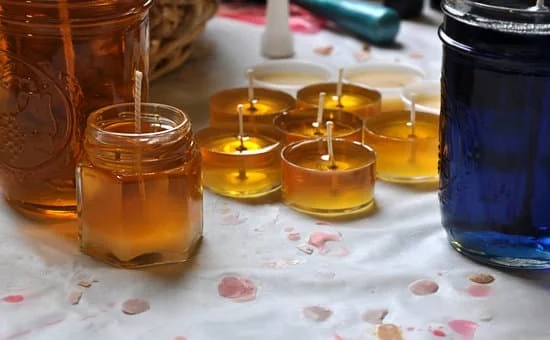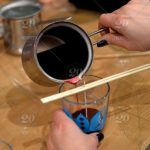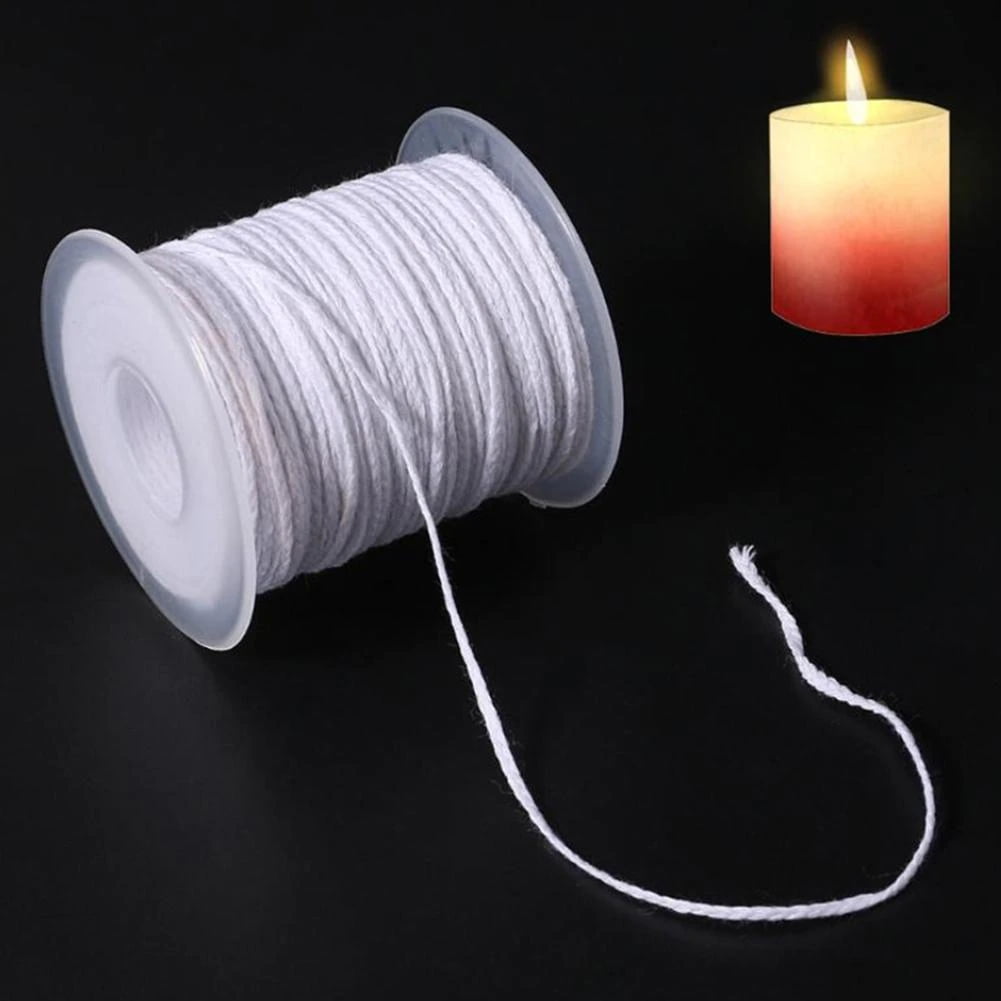Candle making is a timeless craft that allows individuals to create beautiful and unique pieces while adding a touch of warmth and ambiance to any space. However, one common issue that many candle makers face is tunneling, where the candle burns straight down the center, leaving wasted wax along the sides. In this article, we will explore the art of making candles and delve into how to avoid tunneling for a perfect finished product.
From ancient civilizations using natural materials like beeswax and animal fats to the modern trends of soy and paraffin wax blends, the history of candle making is rich and diverse. The evolution of techniques and tools has made it more accessible for DIY enthusiasts to create their own customized candles at home. With the right materials and guidance, anyone can learn how to craft beautiful candles that burn evenly without experiencing tunneling issues.
In this comprehensive guide, we will discuss essential materials and tools needed for candle making, provide a step-by-step tutorial on creating the perfect candle while avoiding tunneling, offer troubleshooting tips for fixing common problems like tunneling, and share creative ideas for both beginners and experienced crafters. Discover the benefits of making your own candles, from personalization to quality control, along with tips on proper care and storage to prevent tunneling issues in the future.
Join us on this journey as we embrace the art of candle making while ensuring beautiful results every time.
History of Candle Making
The art of making candles dates back centuries, with ancient civilizations using various techniques and materials to create light sources for practical and ritualistic purposes. In ancient times, candles were typically made from tallow, beeswax, or plant-based waxes like bayberry. These early candles were lit using a flame at one end, providing illumination in homes, temples, and outdoor spaces.
Ancient Candle Making Techniques
One of the oldest known methods of making candles involves dipping a wick repeatedly into melted wax or other materials to build up layers and create a solid candle. Another technique involved pouring molten wax into molds made of clay or metal to form shaped candles. These early methods required skill and patience, but they laid the foundation for modern candle making practices.
Evolution of Candle Making
Over time, candle making evolved as new materials and technologies became available. The introduction of paraffin wax in the 19th century revolutionized the industry, offering a more affordable and versatile option for creating candles. Today, candle makers have access to a wide range of waxes, dyes, fragrances, and tools to experiment with different styles and designs. From traditional taper candles to decorative jar candles, the possibilities are endless when it comes to creating unique and personalized lighting options.
Essential Materials and Tools for Making Candles at Home
When it comes to making candles at home, having the right materials and tools is essential for a successful and enjoyable candle-making experience. Whether you are a beginner or an experienced crafter, having the proper supplies will help you create beautiful candles without encountering issues like tunneling. Here is a breakdown of the essential materials and tools you will need to get started on your candle-making journey.
Materials
Wax
The most crucial ingredient in candle making is wax. There are various types of wax available including paraffin, soy, beeswax, and palm wax. Each type of wax has its own unique characteristics that can affect the appearance and burn quality of your candles.
Wicks
Wicks are another important component of candle making as they provide the pathway for the melted wax to travel up to be burned. Choosing the right wick size for your candle size and type of wax is essential in preventing tunneling issues.
Tools
Double Boiler or Melting Pot
A double boiler or melting pot is used to melt the wax evenly and safely without direct heat contact. This ensures that the wax does not scorch or burn during the melting process.
Thermometer
Having a thermometer is crucial for monitoring the temperature of the melted wax. Maintaining the correct temperature while adding fragrance oils or dyes can prevent tunneling issues in your finished candle.
By investing in high-quality materials and tools, you can elevate your candle-making experience and create stunning candles without encountering problems like tunneling. Properly equipped with these essentials, you’ll be well on your way to crafting beautiful candles at home that burn evenly and brightly every time.
Step-by-Step Guide to Making the Perfect Candle
Candle making is a beautiful craft that allows individuals to create personalized and unique candles for their homes or as gifts for loved ones. However, one common issue that many candle makers face is tunneling, where a hole forms down the center of the candle instead of the wax melting evenly. This can be frustrating, but with the right techniques and tips, it can be easily avoided.
To make the perfect candle while preventing tunneling, it is crucial to choose the right type of wax. Look for high-quality waxes specifically designed for candle making, such as soy wax or beeswax. These waxes have lower melting points and better burn characteristics, reducing the likelihood of tunneling issues.
Additionally, using a proper wick size for your candle container can ensure an even melt pool and prevent tunneling. Be sure to follow guidelines on wick sizes based on your chosen wax type and container size.
Another important step in making a tunnel-free candle is to properly heat and melt your wax. Make sure to heat your wax slowly and evenly to prevent any air bubbles from forming, which can lead to uneven burning later on.
Stirring your melted wax gently can also help distribute the fragrance evenly throughout the candle while avoiding potential air pockets that could cause tunneling. By taking these precautions during the candle making process, you can create beautiful candles without worrying about tunneling issues detracting from their overall appearance and performance.
Troubleshooting Common Candle Making Problems
Tunneling is a common issue that many candle makers face during the process of creating their own candles. It occurs when the wax burns down the center of the candle, leaving a tunnel-like hole and unused wax along the edges. This not only affects the appearance of the candle but also leads to inefficient burning. Fortunately, there are ways to troubleshoot and fix tunneling to ensure your candles burn evenly and beautifully.
One effective method to prevent tunneling is by using proper wicks for your candles. Choosing a wick that is appropriate for the size and type of candle you are making can make a significant difference in how evenly it burns.
Wicks that are too small will not create a wide enough melt pool, leading to tunneling, while wicks that are too large can cause your candle to burn too fast and unevenly. Experimenting with different wick sizes and types can help you find the perfect match for your candles.
Another way to fix tunneling in your candles is by practicing good burning habits. When lighting your candle for the first time, allow it to burn long enough for the melt pool to reach the edges of the container. This will help prevent tunneling from occurring in future burns.
Additionally, avoid extinguishing your candle before the melt pool has reached all the way to the edges, as this can create a memory ring that leads to tunneling in subsequent burns. By following these simple tips, you can enjoy beautifully burning candles without worrying about tunneling issues.
| Tunneling Prevention Strategies | Description |
|---|---|
| Use Proper Wicks | Choose wicks that are suitable for your candle size and type to promote even burning. |
| Practice Good Burning Habits | Allow your candle to burn until the melt pool reaches the edges during each use to prevent tunneling. |
Creative Candle Making Ideas for Beginners and Advanced Crafters
Candle making is not only a practical skill but also a creative outlet for many. Whether you are just starting out or have been crafting candles for years, there are endless opportunities to explore new ideas and techniques. For beginners, simple designs like layering different colored waxes or incorporating dried flowers can add a unique touch to your creations. Advanced crafters may enjoy experimenting with more complex patterns, textures, or even embedding objects within the candles.
One creative idea for candle making is to customize the scent of your candles. By mixing various essential oils or fragrances, you can create unique blends that cater to your personal preferences or match a specific theme or occasion. Additionally, experimenting with different wax types such as soy wax, beeswax, or paraffin wax can yield varying results in terms of burn time and aesthetics.
Another interesting concept is to incorporate recycled materials into your candle making process. From old glass jars to leftover wax scraps, there are many ways to upcycle items and reduce waste while creating beautiful candles.
This eco-friendly approach not only adds a sustainable element to your craft but also adds a personal touch to each candle you make. By exploring these creative ideas and techniques, you can further enhance your candle making skills and produce truly unique pieces that stand out.
Benefits of Making Your Own Candles
Making your own candles can be a fulfilling and rewarding experience, providing you with the opportunity to create personalized products tailored to your preferences. Whether you enjoy experimenting with different scents, colors, or shapes, candle making allows you to unleash your creativity and produce unique items that reflect your individual style. By choosing your own ingredients and design elements, you can craft candles that perfectly suit your taste and enhance the ambiance of any space.
To further emphasize the benefits of making your own candles, here are some compelling reasons why this creative hobby is worth pursuing:
1. Personalization: When you make your own candles, you have full control over the ingredients used, allowing you to customize the scent, color, and texture according to your preferences. This personal touch adds a special element to your candles and makes them stand out as truly one-of-a-kind creations.
2. Quality: By handcrafting your candles, you can ensure that only high-quality materials are incorporated into each product. This attention to detail results in superior candles that burn evenly, emit a pleasant fragrance, and provide long-lasting enjoyment. Additionally, homemade candles often contain fewer chemicals than store-bought alternatives, promoting a healthier and more natural environment in your home.
3. Cost-Effectiveness: While investing in candle making supplies may initially seem expensive, creating your own candles can ultimately save you money in the long run. By buying ingredients in bulk and reusing equipment multiple times, you can produce a larger quantity of candles at a fraction of the cost of purchasing them from retailers. As an added bonus, handmade candles also make thoughtful gifts for friends and family members on special occasions.
Incorporating candle making into your crafting repertoire not only enables you to express yourself artistically but also guarantees high-quality products that enhance your living space. The ability to personalize every aspect of the candle-making process ensures that each creation is uniquely yours, reflecting your individual style and preferences. So why not embark on this creative journey today and discover the joy of crafting beautiful candles tailored to suit your specific tastes?
Tips for Proper Candle Care and Storage to Prevent Tunneling Issues
Candle care and storage are crucial aspects to consider in order to prevent tunneling issues and ensure your candles burn evenly and beautifully. By following these tips, you can maintain the quality of your candles for longer periods of time:
- Trim the Wick: Before each use, trim the wick of your candle to about ¼ inch. This helps prevent high flames that can cause uneven burning and tunneling.
- Avoid Drafts: Place your candles away from drafts or air vents, as this can affect how the candle burns and potentially lead to tunneling.
- Burn in Intervals: When lighting your candle for the first time, allow it to burn until the wax pool reaches the edges of the container. This sets the “memory” of the candle for future burns and prevents tunneling.
Proper storage of your candles is also essential in preventing tunneling issues and maintaining their quality:
- Store in a Cool, Dry Place: Keep your candles away from direct sunlight or heat sources, which can cause them to soften or melt.
- Avoid Stacking: If you have multiple candles, avoid stacking them on top of each other as this can cause pressure on the wax and lead to misshapen candles.
- Use airtight containers or bags: To prevent dust or debris from collecting on your candles, store them in airtight containers or sealable bags when not in use.
By following these simple tips for proper candle care and storage, you can enjoy your handmade creations without worrying about tunneling issues affecting their beauty and longevity.
Conclusion
In conclusion, the art of making candles is a wonderful and fulfilling craft that allows for creativity and personalization. From ancient techniques to modern trends, the history of candle making has evolved, but the essence of creating something unique remains constant. By understanding essential materials, tools, and techniques, anyone can embark on their own candle making journey.
One common issue that crafters face is tunneling, where candles burn straight down instead of evenly across the surface. However, with proper guidance and troubleshooting tips, it is possible to avoid this problem and create stunning candles that burn beautifully. By following a step-by-step guide and being aware of common pitfalls in candle making, enthusiasts can achieve professional results in their homemade creations.
The benefits of making your own candles go beyond just the satisfaction of crafting something by hand. It provides a way to personalize gifts, create ambiance in your home, and ensure high-quality ingredients are used.
With the right care and storage practices in place, it is possible to enjoy your handmade candles for longer periods without encountering tunneling issues. So embrace the art of candle making, get creative with new ideas, and enjoy the process of creating beautiful results with each candle you make.
Frequently Asked Questions
How Do You Keep Homemade Candles From Tunneling?
To prevent homemade candles from tunneling, it is important to ensure that the candle burns evenly during each use. This can be achieved by allowing the candle to burn long enough for the wax pool to reach the edges of the container during the first burn.
Trimming the wick before each use and avoiding drafts can also help maintain an even burn and prevent tunneling.
What Causes Tunneling When Making Candles?
Tunneling in candles is usually caused by not allowing the candle to melt wax evenly across the entire diameter of the container during each use. This results in a hole forming down the center of the candle, with unmelted wax remaining along the edges.
Poor quality wicks, using a wrong type of wax for the container, or burning the candle for short periods can also contribute to tunneling.
How Do You Prevent Sinkholes in Candles?
Sinkholes in candles occur when air pockets form within the melted wax as it cools down, resulting in holes on the surface of the candle. To prevent sinkholes, it is essential to pour wax at an appropriate temperature and avoid cooling too quickly or pouring multiple layers too rapidly.
Properly heating and mixing your wax before pouring can also help reduce the chances of sinkholes forming in your candles.

Welcome to my candle making blog! In this blog, I will be sharing my tips and tricks for making candles. I will also be sharing some of my favorite recipes.





